A long time ago, in a galaxy far, far away… in 1977, the first Star Wars film released in theaters. George Lucas introduced moviegoers to a new universe that was clearly expansive and well-thought-out, but few people could have expected it to become what fans see today when they play something like Star Wars Jedi: Survivor. With Star Wars Outlaws peering over the horizon, it’s going to have its work cut out for it in order to fit itself into a galaxy filled with stories new and old.
For Star Wars, the term “world-building” seems like an understatement. Truly, there is an entirely fictional galaxy, consisting of hundreds of planets with thousands of races of people and animals, both intelligent and non-intelligent. On top of that, there are multiple time periods with their own technology, politics and key players that can be traced through various source material. Somehow, throughout all of this, the Star Wars games have to do something that deserves more credit than it receives: staying both grounded and original in a franchise that is filled to the brim with content.
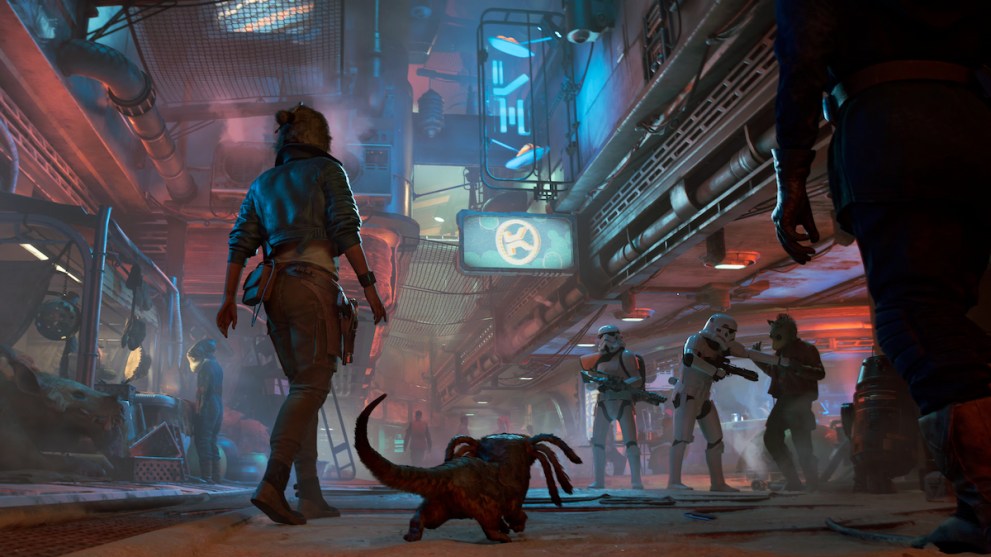
To get an idea of where the bar is at, we have to dive a little bit into what makes Star Wars’ world-building so special. It isn’t a matter of just having a bunch of stories and tacking the name “Star Wars” onto the title, but it all has to be tied together in some way. This isn’t to say that everything has to revolve around the Skywalker family lineage, but there needs to be some semblance of continuity amongst the media in order for things to really, properly make sense.
So, if you want to introduce a new character, there’s a few boxes that have to be checked off before you can put them in the Galaxy and set them free. They need a backstory; things like what planet they were raised on, what species they or their companions are and what ways they’ve gotten on the Empire’s bad side. All of it needs to be cohesive as well, because these are subconscious factors that direct the way players feel about a character as they’re playing as them.
For example, Jedi: Survivor opens with Cal being transported on Coruscant in a Republic Gunship, first seen at the start of the Clone Wars. That alone subconsciously cements in the player’s mind as to when the game is taking place. There are no longer clones troopers, so you know that this takes place after the fall of the Republic, but the use of those ships shows that it is still before the Empire’s height in A New Hope. It’s subtle world-building techniques like those that stand out and set a high bar for future games like Outlaws.
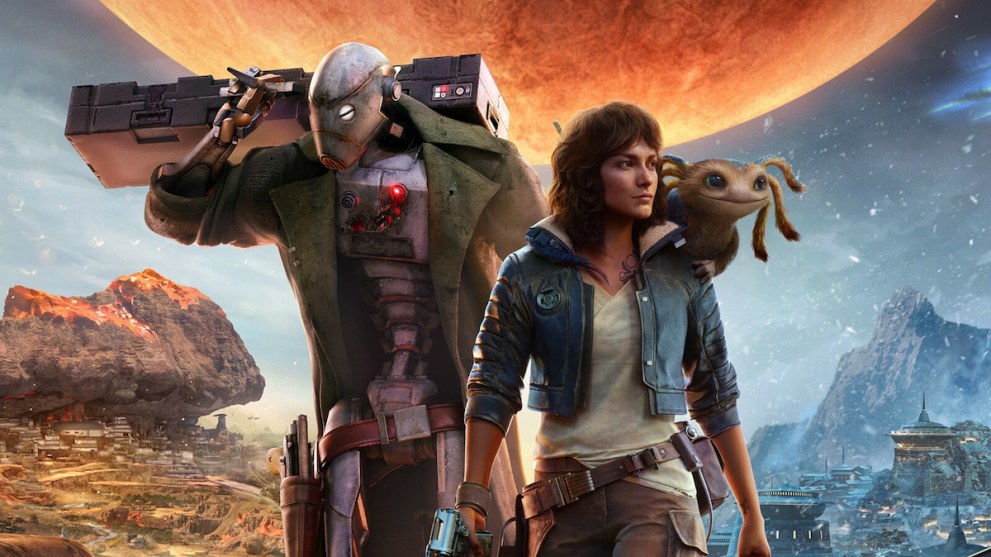
So far, Outlaws looks like it’s going to do a pretty good job of fitting Kay Vess into the galaxy, while also not being too heavy handed. The game could easily go over the top and only show the same few races of people, the same droids and the same locations as every other piece of Star Wars content, which gets tiring after a while. Outlaws seems to be going in the right direction with using a recognizable build like the commando droid as a supporting character, while also using an entirely new species like Nix as Kay’s companion. It provides a sense of familiarity to maintain the setting, but there are still clearly new things that the game will introduce.
Now, making the environment of the games fit the timeline is only a fraction of the whole picture. Not every player who picks up a game is going to know every last reference that slips into the maps’ nooks and crannies, and that’s where collectible lore comes in. Jedi: Survivor has areas for BD-1 to scan that give you bits of context for your surroundings that reinforce the setting, like the Imperial Security Bureau or the Galactic Senate.
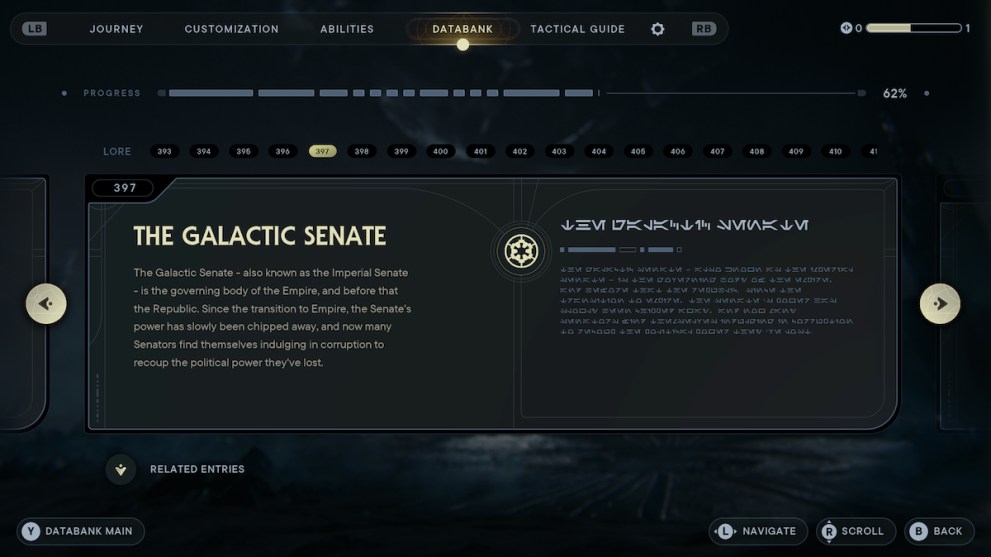
The emphasis goes on “bits of context,” because some games can go overboard with how much context is given. In Jedi: Survivor, it’s very digestible to learn about the galaxy you’re playing in while you’re playing in it, but games like Wolfenstein or Dragon Age: Inquisition feel like it has to be an active task to learn. It felt like the majority of time I spent playing Dragon Age was spent sitting and reading blocks of text followed by more blocks of text from the Codex, all to understand a small conflict that was mentioned once by one of the characters. I truly did want to know the lore and background for the game, but it became disruptive when it took so long to get some context.
Ideally, Star Wars Outlaws will have a lore system that is more reminiscent to Jedi: Survivor and less like Dragon Age, because the galaxy is so vast that there is plenty that will need to be elaborated on. Games like the Wolfenstein franchise differ from fantasy or science fiction games because they’re trying to build upon the real world that already exists, which is harder than it may seem. There’s so much to explain in order to understand the differences from reality, but you can take a step back and see the bigger picture without having to dive too deep. Star Wars is reaching a point where the lore almost doesn’t need to dive so deep in because so much of the history is ingrained throughout the content, yet the history is entirely fictional.
It will certainly be interesting to see how well Ubisoft and Massive can build the world for Star Wars Outlaws. Respawn has already proven that it’s possible to make Star Wars’ immense lore digestible without being overwhelming, so hopefully Ubisoft can learn from what has come before them. We’re gonna have to wait until the game comes out in 2024 to know for sure, but they’ve certainly got plenty of canon content to work with.

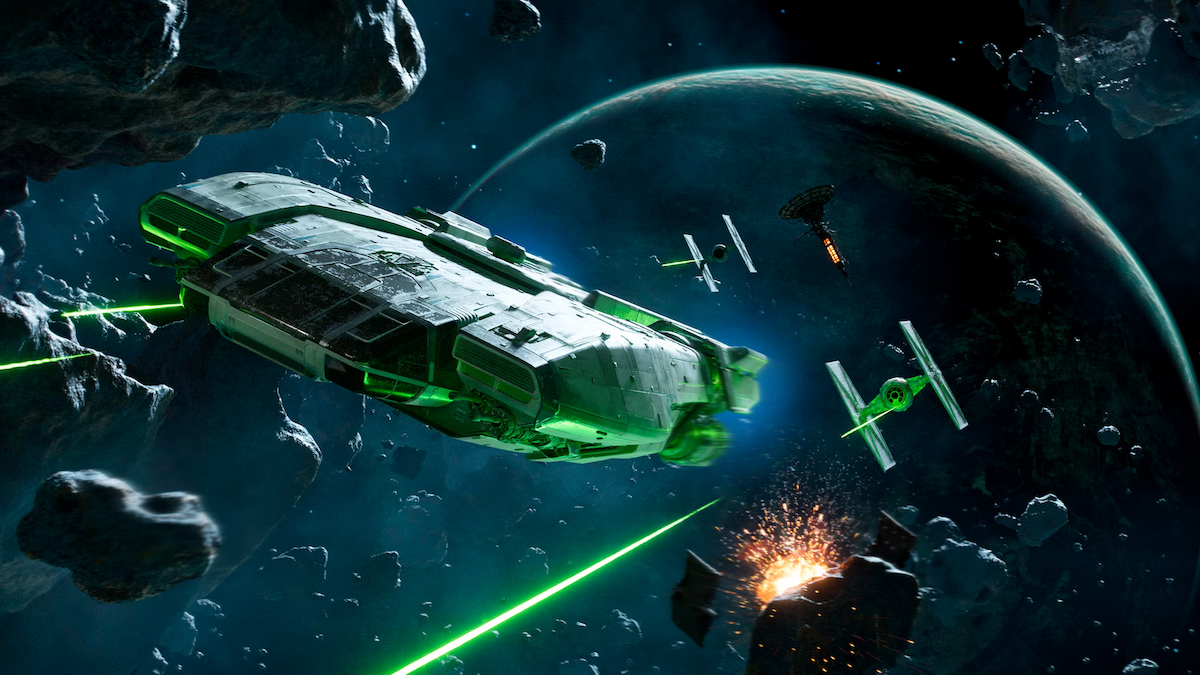



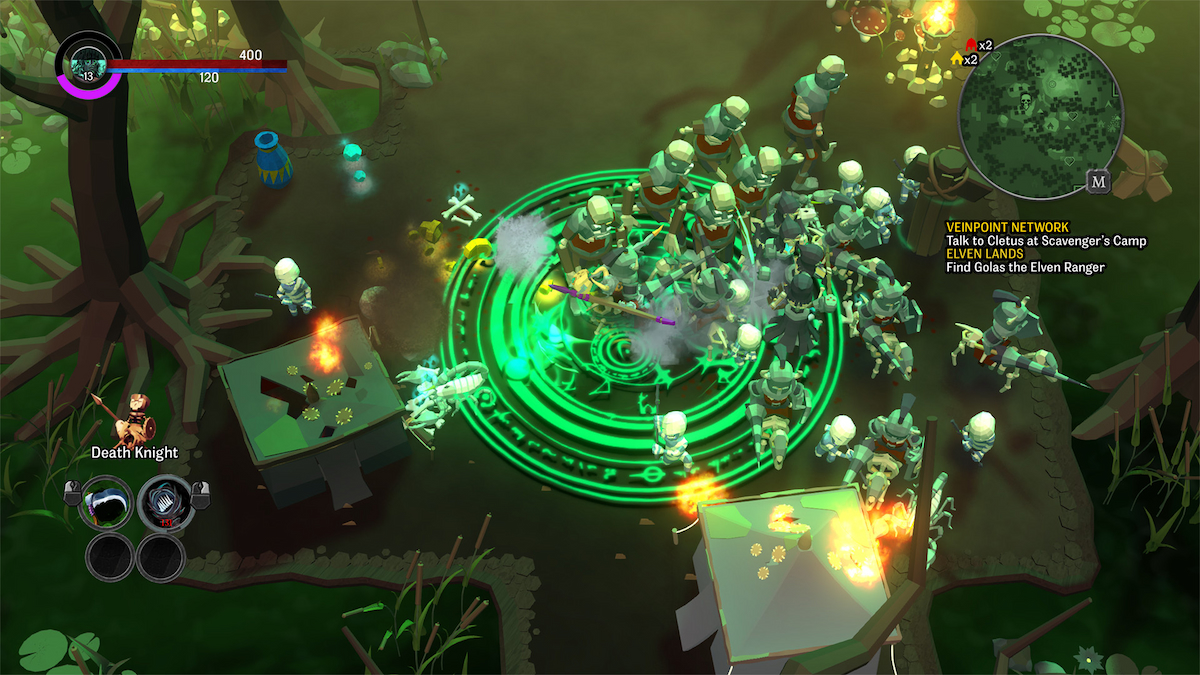



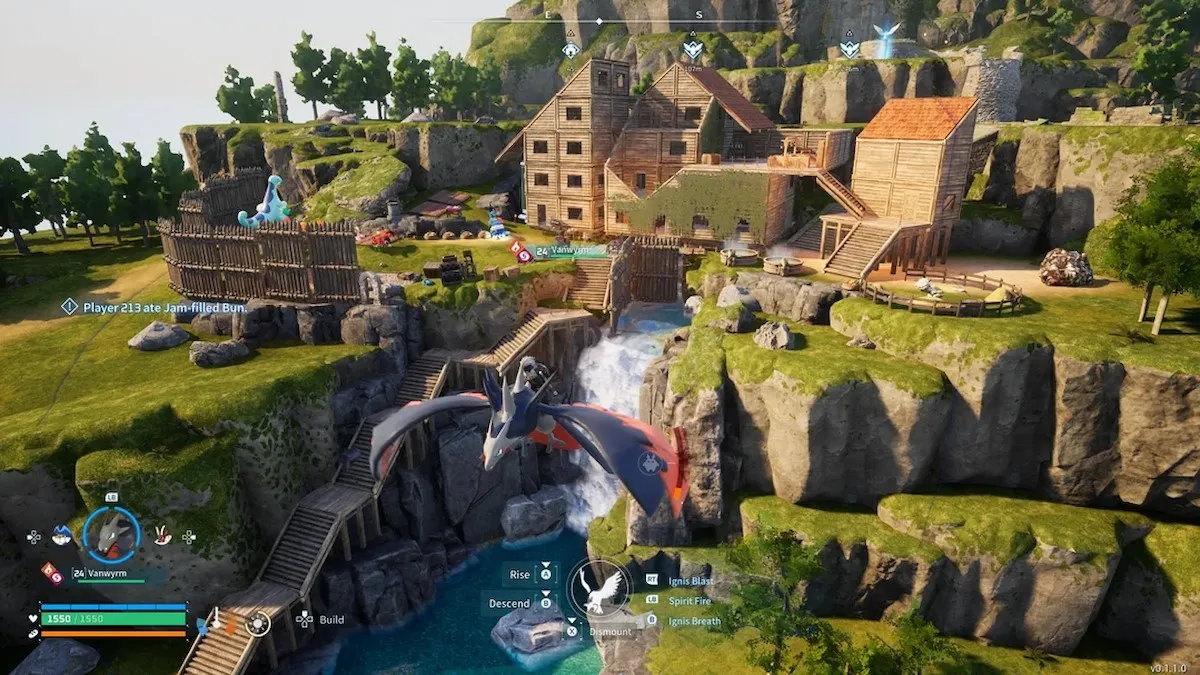


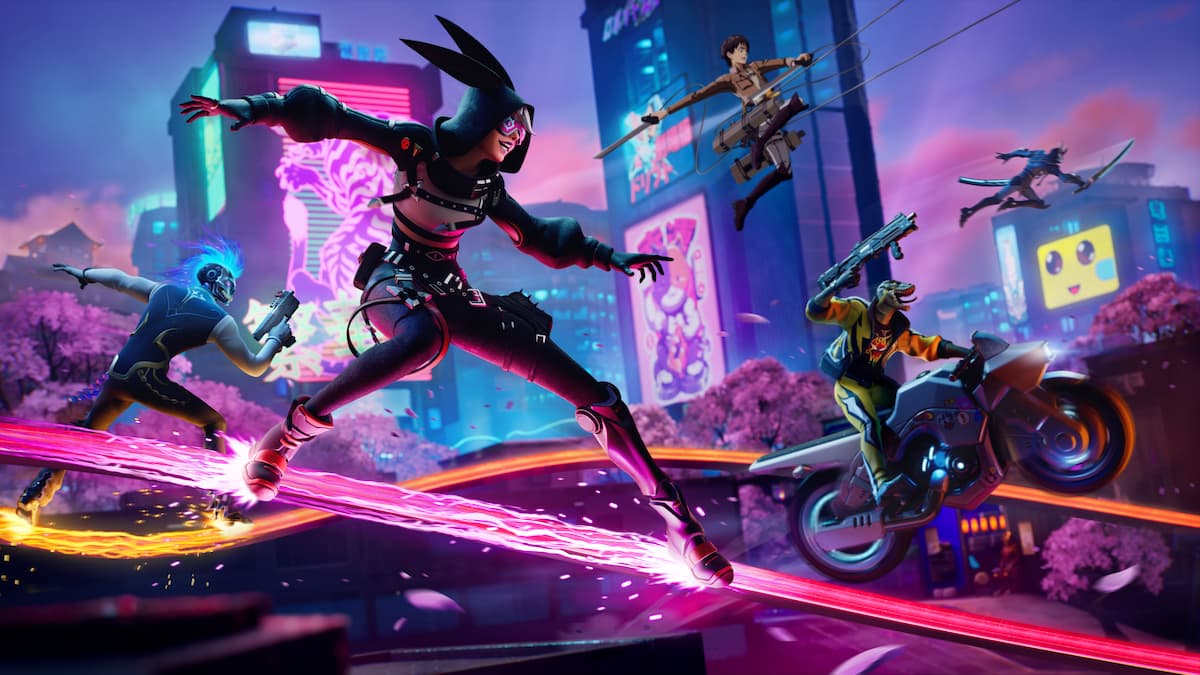

Updated: Jun 30, 2023 07:20 pm